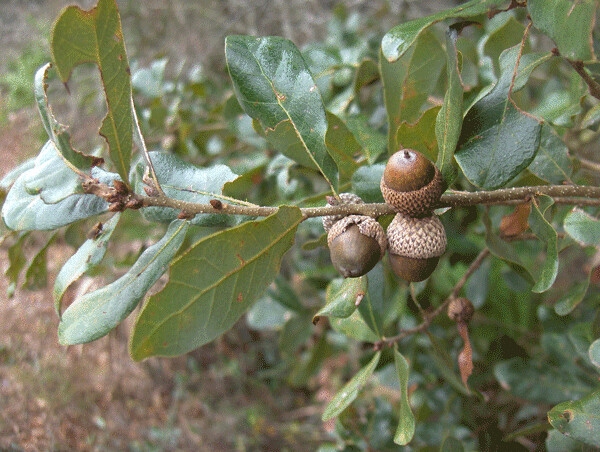Chapman Oak
(Quercus chapmanii)
Chapman Oak (Quercus chapmanii)
/
/

Homer Edward Price
CC BY 2.0
Image By:
Homer Edward Price
Recorded By:
Copyright:
CC BY 2.0
Copyright Notice:
Photo by: Homer Edward Price | License Type: CC BY 2.0 | License URL: https://creativecommons.org/licenses/by/2.0/ | Uploader: homeredwardprice | Publisher: Flickr |





















































Estimated Native Range
Summary
Quercus chapmanii, commonly known as Chapman Oak, is a versatile plant that can be either a deciduous or semi-deciduous tree or shrub. It is native to the sandy soils of scrublands and pine flatwoods in the Southeastern USA, particularly Florida. Chapman Oak typically grows to a height of 9-24 feet (2.7-7.3 meters) and a width of 9-22 feet (2.7-6.7 meters), with a rounded crown and a multi-stemmed growth habit. Its leaves are leathery and dark green, turning yellowish-brown in fall before shedding. The acorns are a food source for wildlife.
Chapman Oak is valued for its adaptability to poor soils and its drought tolerance, making it suitable for xeriscaping and naturalistic plantings. It is used in urban settings for its ability to withstand harsh conditions and in restoration projects to stabilize soils. In cultivation, it thrives in full sun, tolerates a range of soil types provided they are well-drained, and requires low to medium amounts of water once established. It is relatively free of serious pests and diseases but can be susceptible to oak wilt in some areas. Its ability to grow in nutrient-poor soils and its moderate size make it an excellent choice for smaller landscapes where a resilient native species is desired.CC BY-SA 4.0
Chapman Oak is valued for its adaptability to poor soils and its drought tolerance, making it suitable for xeriscaping and naturalistic plantings. It is used in urban settings for its ability to withstand harsh conditions and in restoration projects to stabilize soils. In cultivation, it thrives in full sun, tolerates a range of soil types provided they are well-drained, and requires low to medium amounts of water once established. It is relatively free of serious pests and diseases but can be susceptible to oak wilt in some areas. Its ability to grow in nutrient-poor soils and its moderate size make it an excellent choice for smaller landscapes where a resilient native species is desired.CC BY-SA 4.0
Plant Description
- Plant Type: Tree, Shrub
- Height: 9-24 feet
- Width: 9-22 feet
- Growth Rate: Moderate
- Flower Color: N/A
- Flowering Season: Spring
- Leaf Retention: Deciduous
Growth Requirements
- Sun: Full Sun
- Water: Low, Medium
- Drainage: Fast
Common Uses
Bee Garden, Bird Garden, Butterfly Garden, Low Maintenance, Rabbit Resistant
Natural Habitat
Sandy soils of scrublands and pine flatwoods in the Southeastern USA, particularly Florida
Other Names
Common Names: Chapman’s Oak
Scientific Names: , Quercus chapmanii, Quercus obtusiloba var. parvifolia,
GBIF Accepted Name: Quercus chapmanii Sarg.